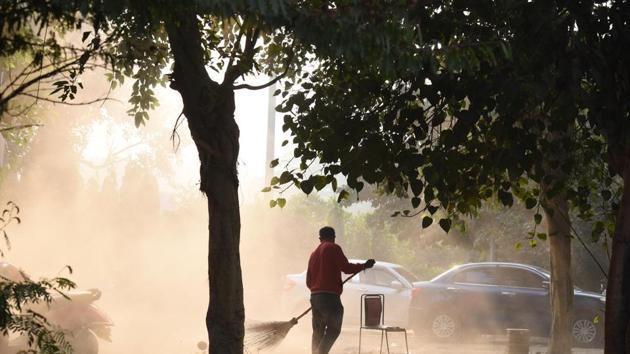Pollution in November 2020 up from last year, shows CPCB data
An analysis of Central Pollution Control Board (CPCB) air quality data shows that the monthly average air quality index (AQI) this November was 327.9, as compared to 312.2 in November 2019.
The average pollution levels this November, when air quality was a dip due to a combination of factors such as farm fires, firecracker bursting on Diwali and adverse meteorological conditions, were higher than last year during the same time.

An analysis of Central Pollution Control Board (CPCB) air quality data shows that the monthly average air quality index (AQI) this November was 327.9, as compared to 312.2 in November 2019. However, it was slightly better than the monthly average of 334.9 in 2018, 360.93 in 2017 and 374.06 in 2016.
This November saw nine ‘severe’ air quality days, as compared to seven last year. Also this year, Delhi had six consecutive ‘severe’ days from November 5-10, the longest ‘severe’ spell seen in the city since 2016.
Besides, only two ‘moderate’ air days were recorded this year -- November 17 (171) and November 27 (137). In November 2019, three ‘moderate’ days were seen -- November 27 (134), November 28 (106), November 30 (193) -- as well as a ‘satisfactory’ day (84) on November 29.
While the year 2018 saw one ‘moderate’ day on November 4 with an AQI reading of 171, the years 2017 and 2016 did not record a single ‘moderate’ day.
On Monday, the average air quality index (AQI) plunged to ‘very poor’ after remaining in the ‘poor’ to ‘moderate’ range over the past three days. The average AQI on Sunday was 256. It was 231 on Saturday and 137 on Friday.
According to experts, a combination of factors playing up at the same time was behind the high pollution levels this November, including a prolonged and intensive stubble burning season that coincided with firecracker bursting and unfavourable meteorological conditions.
“This year, farm fires started early on and continued till late November. The number of fires was much higher than last year. Besides, last year, Diwali was early (October 27) as compared to this year (November 14). This season starting from October itself was drier, as compared to last year. Only one instance of rainfall was seen this November, which helped clear the post-Diwali pollution. All these factors combined contributed to higher particulate matter (PM) concentration this time,” said Anumita Roychowdhury, executive director (research and advocacy), Centre for Science and Environment (CSE).
V K Soni of the India Meteorological department’s environment research centre, said this October -November, the number of fire counts were at least 50% more than last year. Besides, a late Diwali impacted the air quality. “All these factors, with meteorological conditions not being favourable for dispersal at the same time, did not allow the pollutants accumulated in the air to disperse. Since the accumulation was higher, it took longer to disperse, resulting in a long spell of bad air,” said Soni.
Stay updated with all top Cities including, Bengaluru, Delhi, Mumbai and more across India. Stay informed on the latest happenings in World News along with Delhi Election 2025 and Delhi Election Result 2025 Live, New Delhi Election Result Live, Kalkaji Election Result Live at Hindustan Times.
Stay updated with all top Cities including, Bengaluru, Delhi, Mumbai and more across India. Stay informed on the latest happenings in World News along with Delhi Election 2025 and Delhi Election Result 2025 Live, New Delhi Election Result Live, Kalkaji Election Result Live at Hindustan Times.






